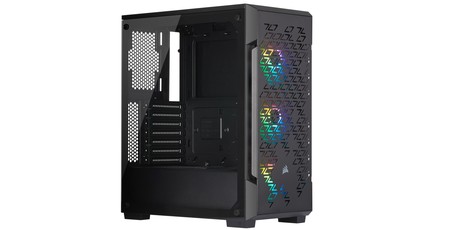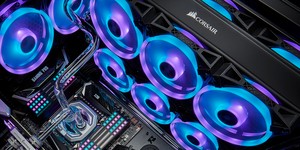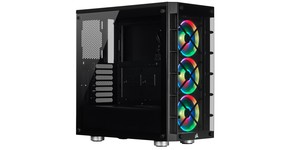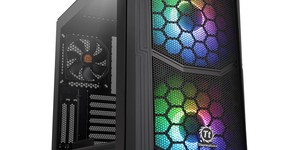
Performance Analysis
With three intake fans having minimally-restricted access to cool air, the iCUE 220T RGB Airflow is able to build up enough positive pressure to effectively exhaust air out of the only places it can realistically leave, the roof and the rear. The case being small in volume also helps out from a pressure perspective, and the overall impact on cooling is clearly excellent. This case lives up to its name and delivers some of the very best out-of-box cooling we’ve seen, offering CPU and GPU delta temperature results that are a mere 2°C away from the very best results.

Our testing is performed at fixed speeds only, and for this case that means full-speed/12V. This does lead to noise output being noticeable, but the airflow-friendly design means you can comfortably reduce the fan speed via motherboard software or physical adaptors without worrying about temperatures, even with overclocked and more demanding hardware. The caveat, of course, is that any noise produced by the fans (and other components inside) is barely contained by the chassis.
Conclusion
The Graphite iCUE 220T RGB Airflow is a simple but effective mid-tower that stays true to Corsair’s RGB ambitions without majorly sacrificing quality elsewhere, all while keeping to a reasonable price tag.
The feature set leans towards the basic side, with no USB Type-C, no vertical GPU support, and limited accommodation for HDDs and SSDs, but the near-total steel construction holds up to scrutiny, and the design is solid for this price level thanks to the PSU shroud, 360mm radiator support, and a lighting hub backed by robust software.

Cable routing could be improved, and space between the HDD cage and PSU is tight, but it’s still a user-friendly design for the most part. The looks are sure to divide opinion, but that jazzed up front panel does wonders for the case’s airflow and is arguably appropriate for a chassis with three RGB fans.
Whereas Corsair’s previous RGB-laden case, the 680X RGB, felt far too expensive, the iCUE 220T RGB Airflow is more fairly priced. If you’re looking for a no-fuss way to show off and light up your components, it fits the bill nicely.


MSI MPG Velox 100R Chassis Review
October 14 2021 | 15:04








Want to comment? Please log in.